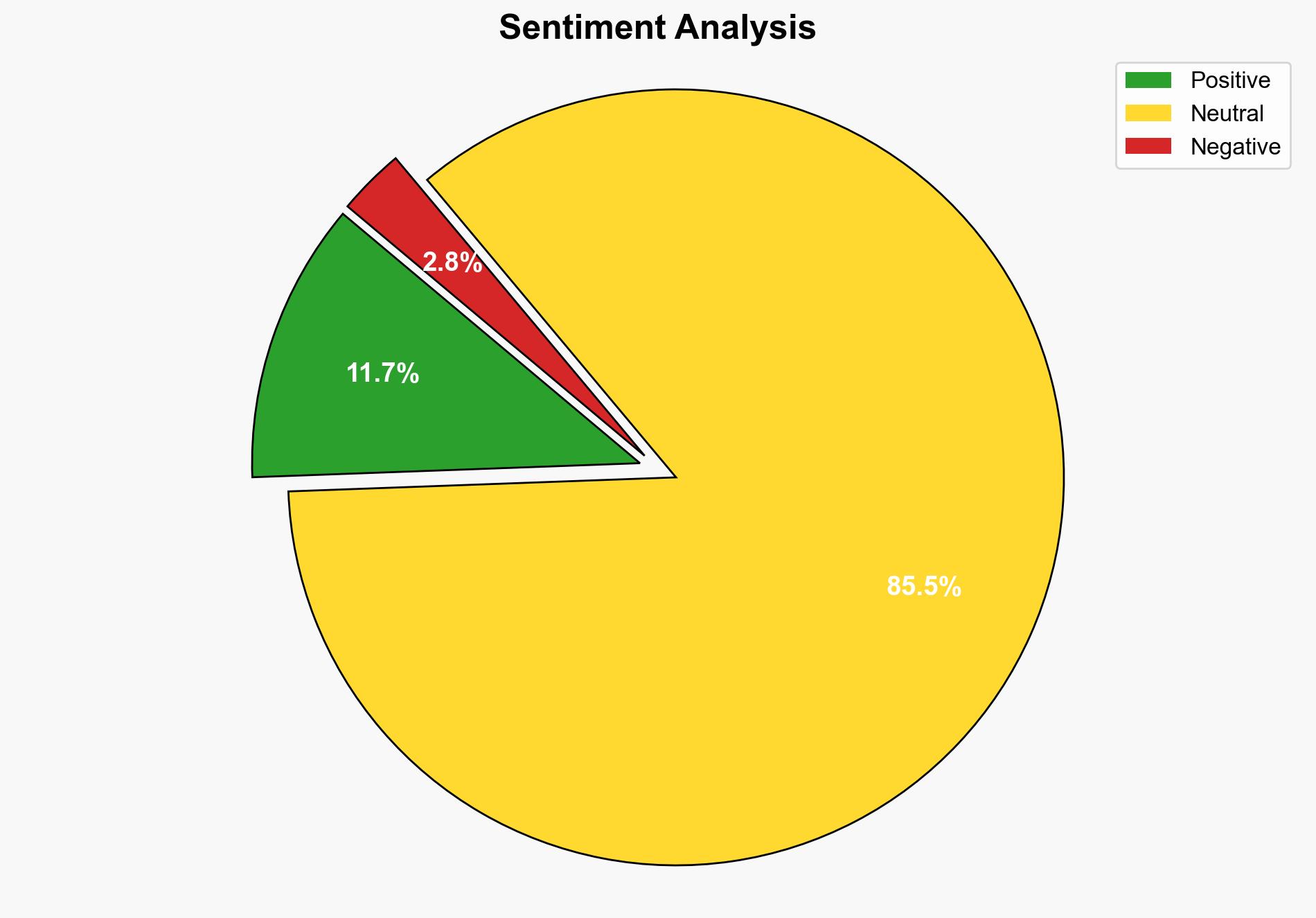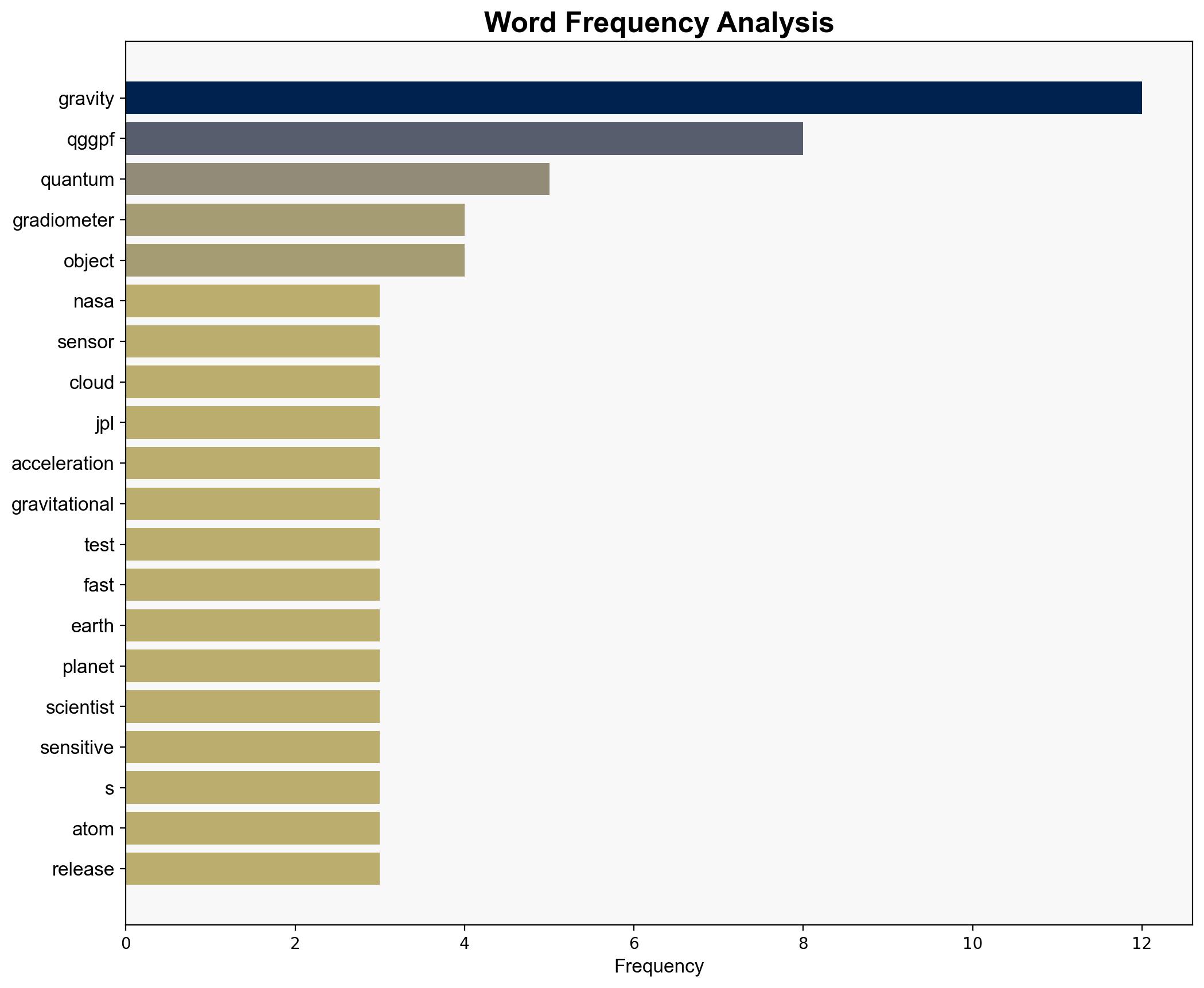NASA Wants to Track Earths Gravity With a Cloud of Floating Atoms in Space – Gizmodo.com
Published on: 2025-04-16
Intelligence Report: NASA Wants to Track Earth’s Gravity With a Cloud of Floating Atoms in Space – Gizmodo.com
1. BLUF (Bottom Line Up Front)
NASA’s development of the Quantum Gravity Gradiometer Pathfinder (QGGPf) represents a significant advancement in gravitational measurement technology, leveraging quantum physics to enhance precision and reliability. This initiative has the potential to revolutionize natural resource mapping, navigation systems, and national security by providing unprecedented insights into subterranean structures and geological processes. The project’s success could lead to broader applications, including planetary exploration.
2. Detailed Analysis
The following structured analytic techniques have been applied:
Scenario Analysis
The deployment of QGGPf could lead to multiple future scenarios. In one scenario, enhanced gravitational mapping could improve resource management and environmental monitoring, leading to economic benefits and improved disaster response. Conversely, the technology could be leveraged for military applications, potentially escalating geopolitical tensions if used for strategic advantage.
Key Assumptions Check
The assumption that QGGPf will operate as intended in space is critical. Potential challenges include technical malfunctions or unforeseen environmental factors affecting performance. Additionally, the assumption that data will be used solely for peaceful purposes must be scrutinized given dual-use potential.
Indicators Development
Key indicators to monitor include advancements in quantum sensor technology, international collaborations or tensions related to space-based surveillance capabilities, and policy developments regarding space exploration and resource management.
3. Implications and Strategic Risks
The successful deployment of QGGPf could alter the strategic landscape by providing detailed gravitational data that enhances resource exploration and environmental monitoring. However, this capability also poses risks if leveraged for military reconnaissance or if it exacerbates international competition in space technology. The dual-use nature of the technology necessitates careful consideration of regulatory and ethical frameworks.
4. Recommendations and Outlook
- Encourage international collaboration to establish norms and regulations for the use of space-based gravitational mapping technologies to prevent misuse.
- Invest in research to further enhance the precision and reliability of quantum sensors, ensuring technological leadership and mitigating potential adversarial advantages.
- Develop contingency plans for potential geopolitical tensions arising from the strategic use of gravitational data.
- Scenario-based projections suggest that successful implementation could lead to significant advancements in resource management and environmental protection by 2030.
5. Key Individuals and Entities
Jason Hyon, Sheng-wey Chiow




